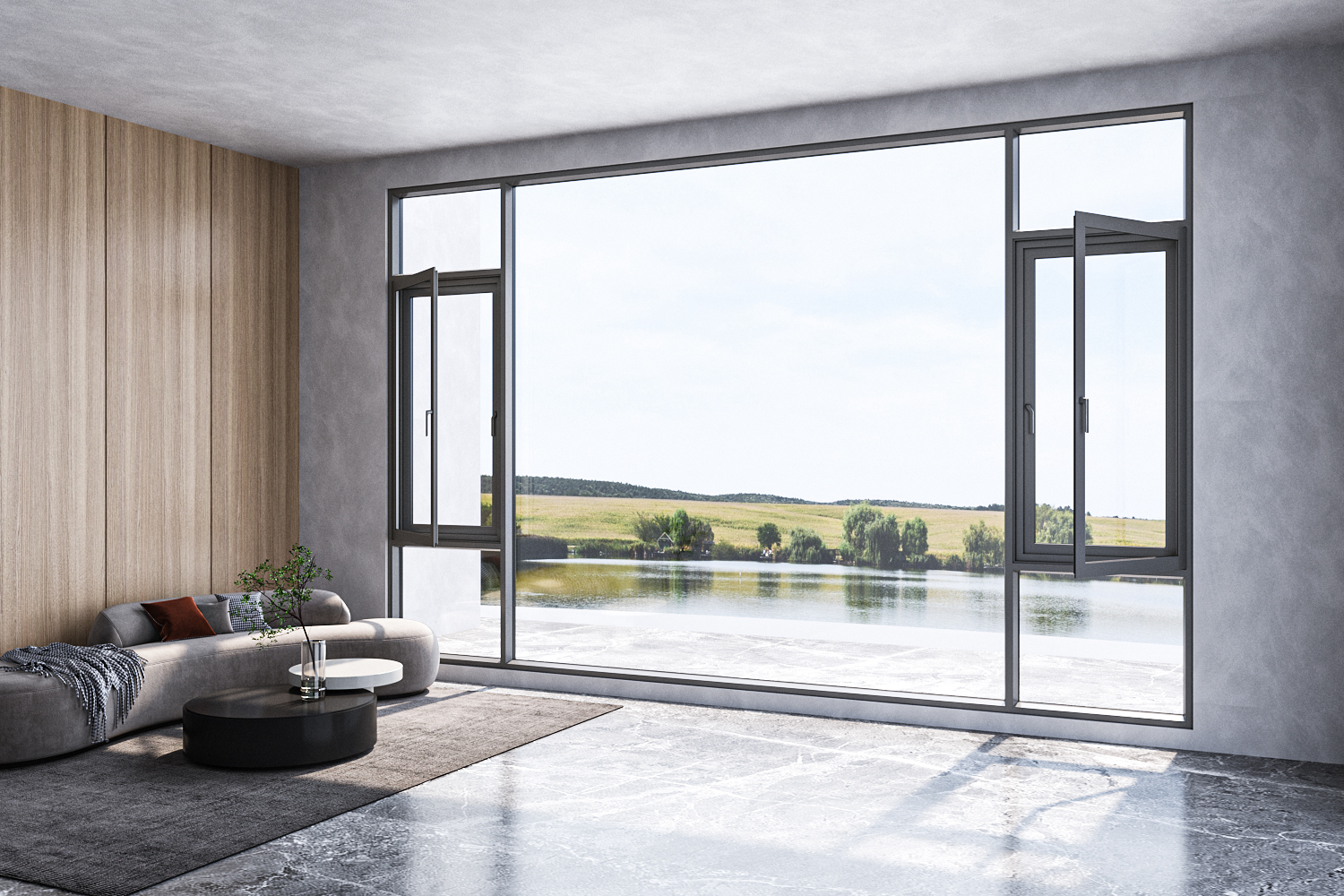· Fixed frame· Inward opening window· Outward opening window· Sliding window
Windows have always been an indispensable part of our human home life, ensuring our living safety and connecting us with nature From a hole in the wall to various insulation, soundproofing, and anti-theft windows, windows have undergone over 4000 years of evolution.

The ancient cave dwellings were wild places, and countless strange and deep caves provided humans with the most primitive homes. The grass cover at the entrance and exit of the cave was probably the earliest concept of a door, and opening a hole in the wall for ventilation and lighting was probably the earliest concept of a window. In ancient times, 'window' meant leaving a hole in a wall. Similarly, the English word 'window' evolved from the combination of the words' wind 'and' eye ', with its original meaning being' wind eye '.
Later, people learned to use broken wooden blocks and animal fur to cover windows, in order to protect themselves from wind and rain. With the development of papermaking and textile industry, ancient windows were mainly made of paper or silk.
In the Roman civilization era, the emergence of glass greatly improved indoor lighting, and human window manufacturing technology took a big step forward. The development of doors and windows has also evolved from early wooden doors and windows, steel windows and ordinary aluminum alloy windows in the early 20th century, to modern plastic windows, bridge cut insulated aluminum alloy windows, wooden windows, and aluminum wood composite windows coexisting. On the basis of the original ventilation and lighting, more emphasis is placed on their decorative and functional applications such as insulation, energy saving, sound insulation and defense.
Plastic windows are a type of energy-saving window that has been actively promoted by the government since the mid-1990s, following wood, iron, and aluminum alloy windows. They are mainly made of PolyVinyl Chloride (PVC) resin and are widely used due to their beautiful appearance, superior insulation and sound insulation performance, and good cost-effectiveness. They have become one of the most commonly used types of windows in modern architecture.
Plastic windows were developed by Germany in the 1950s. Its material has the characteristics of low thermal conductivity, easy processing, and strong climate adaptability, and can replace metal materials as door and window frame materials.
Under this design concept, a series of doors and windows composed of metal and PVC materials emerged. Although the design structure may seem simple now, it creatively solved many problems caused by the high thermal conductivity of metal materials at that time and became a pioneer in the PVC door and window industry.
Technicians have found that the performance of PVC material can be used alone as a structural material for doors and windows. After enhancing the strength and stability of PVC materials, doors and windows are able to withstand wind pressure and various pressures imposed on them in daily life even without metal support.
The separate two cavity structure and the basic determination of hardware functional slots have laid the foundation for the standardization of European slots (also known as U-slots) commonly used in plastic door and window systems today. The newly added drainage structure has taken a revolutionary step towards improving the water tightness performance of plastic doors and windows.
The structure of modern plastic door and window systems has basically taken shape. The system has a complete independent drainage chamber, standard hardware European style grooves (U-grooves), locally reinforced hardware fixing screw parts, etc., and has begun to experiment with intermediate sealing structures to further improve the airtightness of plastic doors and windows and block hardware cold bridges. By adding steel lining reinforcement to improve strength and meet the demand for large-sized opening window sashes, it is a milestone in the history of PVC doors and windows. Nowadays, plastic windows are called plastic steel windows in China due to this practice - adding steel to plastic.
PVC, abbreviated as PolyVinyl Chloride, ranks second in global usage among various synthetic materials. PVC has strong resistance to oxidants, reducing agents, and strong acids, and has high chemical stability. Through reasonable formula design, it has non flammability, high strength, resistance to weather changes, and excellent geometric stability.
With unique material formula and perfect production process, the surface texture of doors and windows is fine and smooth, with good anti-aging deformation and corrosion resistance. Even in extreme weather environments, no special maintenance or cleaning is required. Lead free formula manufacturing is environmentally friendly and safe to use.